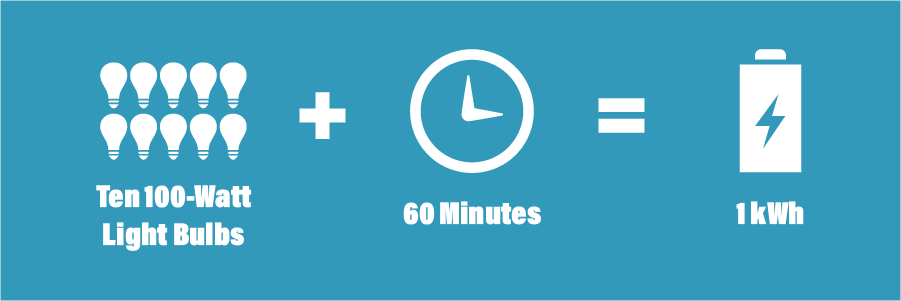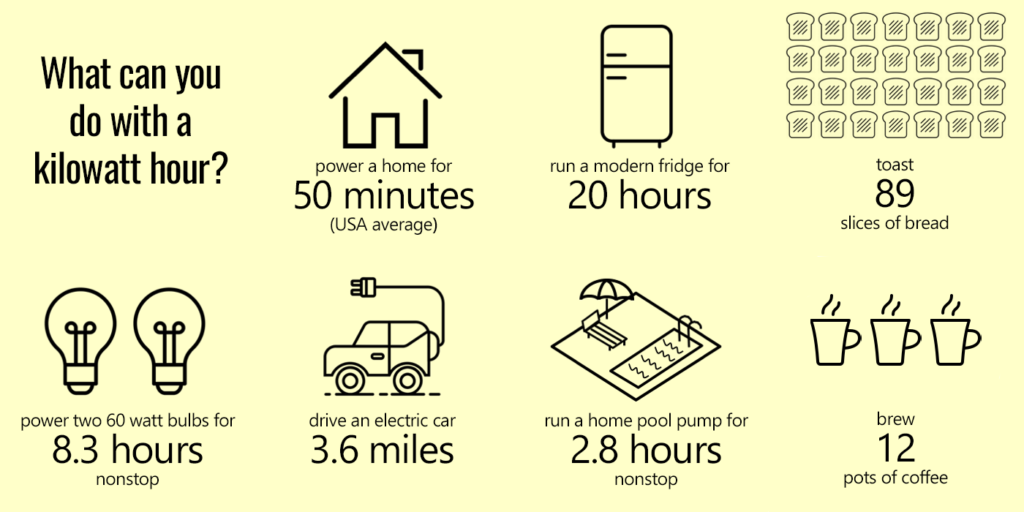It’s easy to understand the part of your power bill that deals with dollars and cents, but many people lose interest when it comes to the actual metric that decides how much they pay each month. This metric is the kilowatt hour, and understanding its relationship to your electric bill and things like lights and air conditioning can help you make more informed energy decisions in the future – and maybe even save you money.
What is a kilowatt hour?
The power of an electric system is typically measured in watts. A single watt is relatively small, so you’ll usually see wattage referred to in terms of:
- Kilowatts (1000 watts)
- Megawatts (1 million watts)
- Gigawatts (1 billion watts)
Let’s say that you have a 1 kilowatt air conditioner. If it runs for an hour, it will use 1 kilowatt hour of electricity. If your 2 kilowatt water heater and 500 watt stereo are on for an hour, they will use 2 kilowatt hours and 0.5 kilowatt hours respectively. (If you want to see how many watts are used for common household items, check out this list.)

In simpler terms, a kilowatt hour is the amount of energy that a 1 kilowatt system will consume or produce in an hour.
Your energy utility counts the amount of kilowatt hours your home uses each month and charges you a set rate for each one. If you use low-wattage appliances and lights, your home will use less kilowatt hours and ultimately save you money.
What can you do with a kilowatt hour?
Now that we know what a kilowatt hour is in theory, let’s break down some practical applications of a single kilowatt hour. One kilowatt hour can:
- Power the average American home for 50 minutes
- Power a modern refrigerator for 20 hours
- Power two 60-watt light bulbs for 8.3 hours
- Toast 89 slices of bread
- Drive an electric car for 3.6 miles
- Smelt 2.2 ounces of aluminum
- Run an average home pool pump for 2.8 hours
The sources for these numbers can be found here.
Clearly a single kilowatt hour can go a long way, but they can really start to add up over the course of a month. Energy-efficient electronics usually run at a lower wattage, using fewer kilowatt hours and ultimately leading to smaller power bills.

How do you make a kilowatt hour of electricity?
The rate that a utility charges you is based heavily on the amount of resources needed to produce one kilowatt hour. On average, that requires:
- About a pound of coal
- 7.6 cubic feet of natural gas
- Over 1.2 ounces of uranium ore, which is refined to create 1/10000 of an ounce of enriched uranium
- 2.5 hours of a solar panel in direct sunlight
- A wind turbine spinning for less than 2 seconds
- 1,500 gallons of water flowing through a hydroelectric dam
Clearly some methods of generation are less resource-intensive than others, and these are generally cheaper as well.
